Macro & Close-up Photography Tips – Plants & Flowers
Plants and flowers are one of the most popular subjects for macro photography. They are naturally appealing the eye, and can be found easily. Even in winter you can still buy cut flowers to practise your photography skills on indoors.
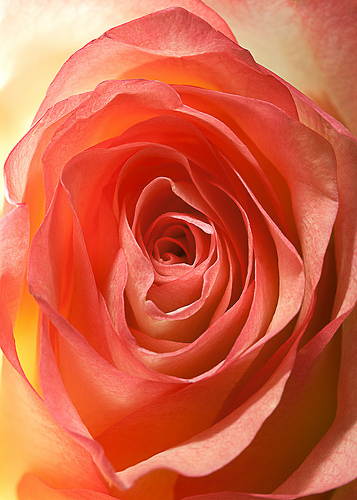
Rose 7623 by Kain Kalju on flickr (licensed CC-BY)
Composition
Focusing in on one individual flower can often (though not always!) result in a better photo than trying to get a whole group of flowers in focus. If the flowers are packed quite closely together, you can do this through use of a shallow depth of field. For flowers that are further apart, you can afford to use a slightly larger depth of field while still having the others out of focus in the background.
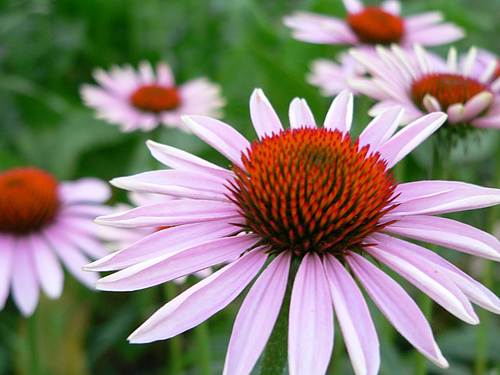
Flowers by dominiqs on flickr (licensed CC-BY)
Flowers can look great from most angles - top down, looking down at an angle, from the side, or looking up from below. Shots looking up at flowers can be particularly interesting, mainly just because this is not the normal view we see of flowers.
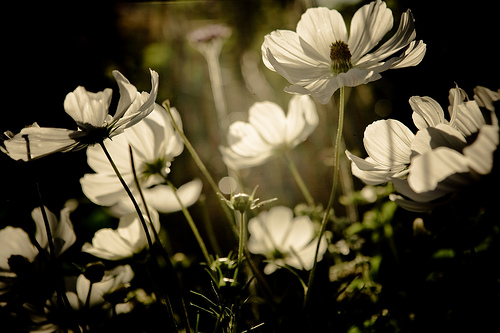
Surrender yourself by kennymatic on flickr (licensed CC-BY)
Pay attention to your background as well the flower itself. Sometimes making a small change in your camera position can make a big change in the background. Try to avoid cluttered backgrounds, odd twigs or pieces of grass that appear as lines in the background can be particularly distracting.
Watch out for blades of grass etc. in the foreground of the image as well. Although these will probably be rendered out of focus, if they are in front of the actual flower head they will probably act as a distracting element. In some cases it is worth doing a bit of 'gardening' to remove distracting elements from the scene. If you're shooting outside of your garden though, make sure you don't go too far with your gardening.
For cut flowers shot indoors you have much more control over your background. You can play around with different backgrounds and different ways of lighting the background (as well as the flowers themselves). I quite like using a plain colored background, and then adding a light pointed at the background to add a highlight.
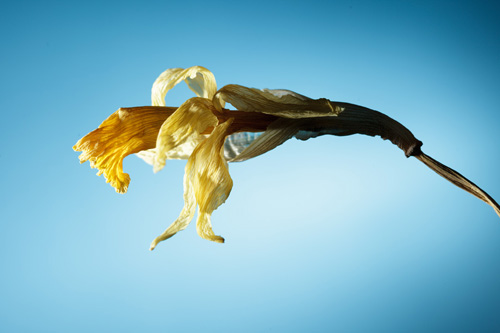
I quite like to keep cut flowers after they start to wilt and then dry them out. Although still recognizable, their look is quite different from when they were fresh.
High key and low key photos of flowers are both easily possible when working with cut flowers. A high key photo is one where the image is very bright, and often mostly backlit. A low key one is a very dark image where only a small amount of the image is lit. High key tends to work better for flowers, but it is worth trying out both techniques.
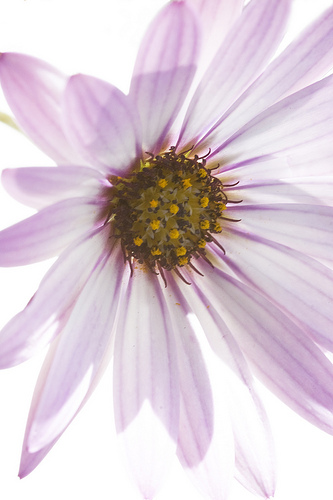
Osteospermum by steve r watson on flickr (licensed CC-BY-SA)
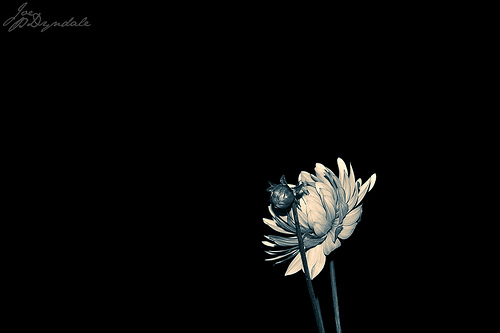
Duo by JD the Photog on flickr (licensed CC-BY-ND)
For more abstract compositions, try photographing at a high magnification. Look through the lens at the flower, and gradually move the lens closer to the flower, watching as different parts of the flower come into and go out of focus. When you find a composition you like, take a shot. This can work particularly well when using a large aperture for a shallow depth of field.
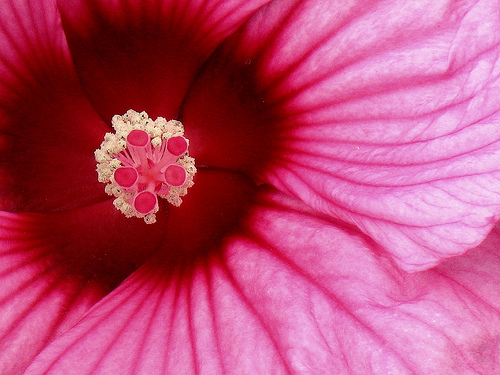
Abstract Hibiscus by lorilafs on flickr (licensed CC-BY-ND)
Best times for flower photography
The best time of day for photographing flowers is usually quite early in the morning as the air is stiller. This allows you to use slower shutter speeds if necessary, without blurring from the flower blowing in the wind.
Of course, for cut flowers, you can shoot them anytime you want! It is usually best though to photograph them soon after purchase, while they are still fresh.
Using a Plamp (Plant Clamp)
If it is a bit windy, trying to focus on a flower blowing about can be quite difficult. In this situation you may be able to use something like a plamp. This is a bendy arm with a larger clamp on one end that clamps to your tripod. On the other end is a smaller clamp that can clamp onto the stem of the flower you are photographing, and hold it steady.
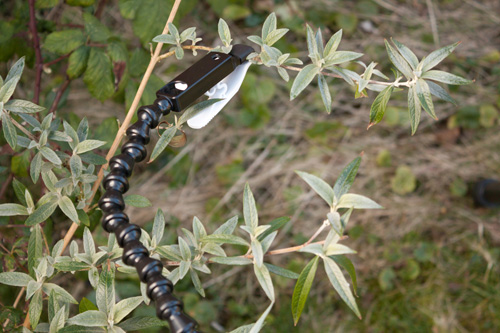
Using a plamp to hold part of a plant steady
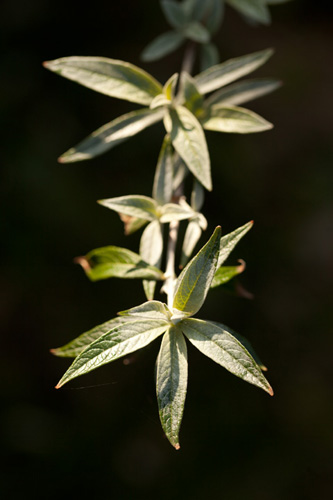
Using the plamp kept the plant from blowing about in the wind, making it much easier to photograph
You can also buy similar products that have a peg on one end for driving into the ground instead of attaching to your tripod. Or why not make your own: DIY Plamp #1. Plamps can also be useful for holding reflectors and diffusion panels to aid in lighting.
Although the plamp does work well to hold a plant steady, there will probably still be a small bit of vibration in the subject from the wind. If you are taking a true macro photo, then this vibration will likely be enough that a slow shutter speed would result in a blurry photo. In this case it can helpful to try and set something up as a windbreak, such as your camera bag, or even your using your own body to block the wind.
Getting down on the flower's level
Most flowers grow reasonably low to the ground, which means either bending, kneeling, or lying down to take a photo on the same level as the flower. To save getting your knees muddy every time you want to kneel down for a photo, you can use a gardening mat. This is just a small foam mat that you can kneel on, designed for use when you are tending your flower borders.
A camera with a flip-out LCD can also be very helpful. It allows you to hold the camera at the same height as the flower, while viewing the preview from above, so you don't have to crouch down quite so low yourself.
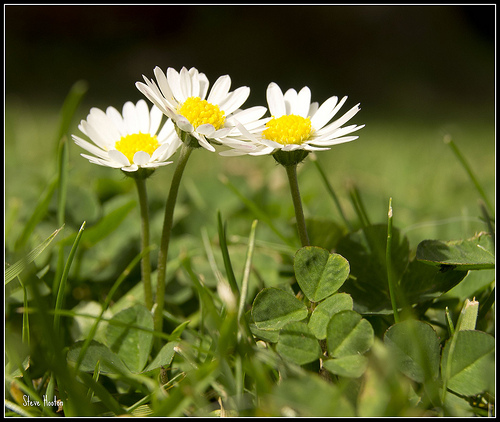
Daisies by forestwildlife on flickr (licensed CC-BY)
For cameras with a viewfinder (particularly SLR cameras) you can purchase a right angle viewfinder. This attaches to the camera's viewfinder and allows you to look down through the viewfinder from above. It's not quite as convenient as a flip-out LCD in that you still need to get your head down low near the camera to look through the viewfinder. But it doesn't have any problems with glare, which an LCD screen can sometimes have depending on the lighting.
Some modern cameras (particularly interchangeable lens cameras) allow controlling the camera from a smartphone or tablet app. This can be a useful way of previewing the photo without having to get down on the camera's level.
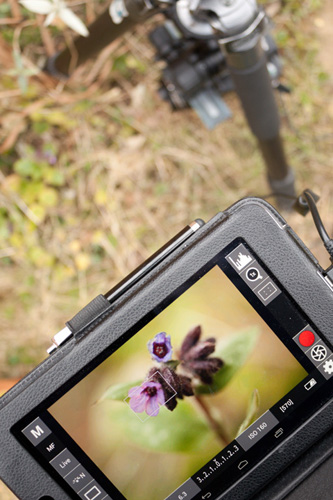
Using an app on a tablet to control the camera instead of having to lie down in the mud to look through the viewfinder
For natural light photos with a slow shutter speed, a tripod that can go very low to the ground is needed for flower-level photos. Alternatively, many tripods have a reversible center column. This allows you to flip the column upside down, so that your camera is now hanging below your tripod, rather than above it. You can read more tips about using a tripod for macro photography on Manfrotto's website: A Close up Look at Macro Photography with the 190PRO + 222.
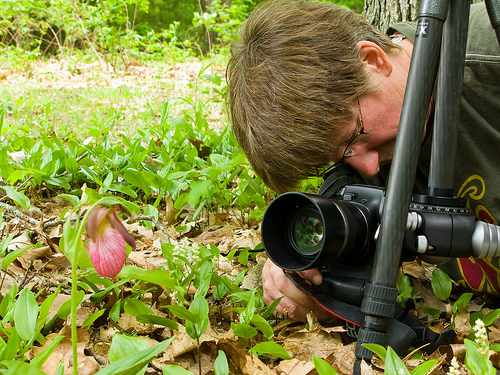
Ellen shoots the pink lady's slipper by sskennel on flickr (licensed CC-BY)




